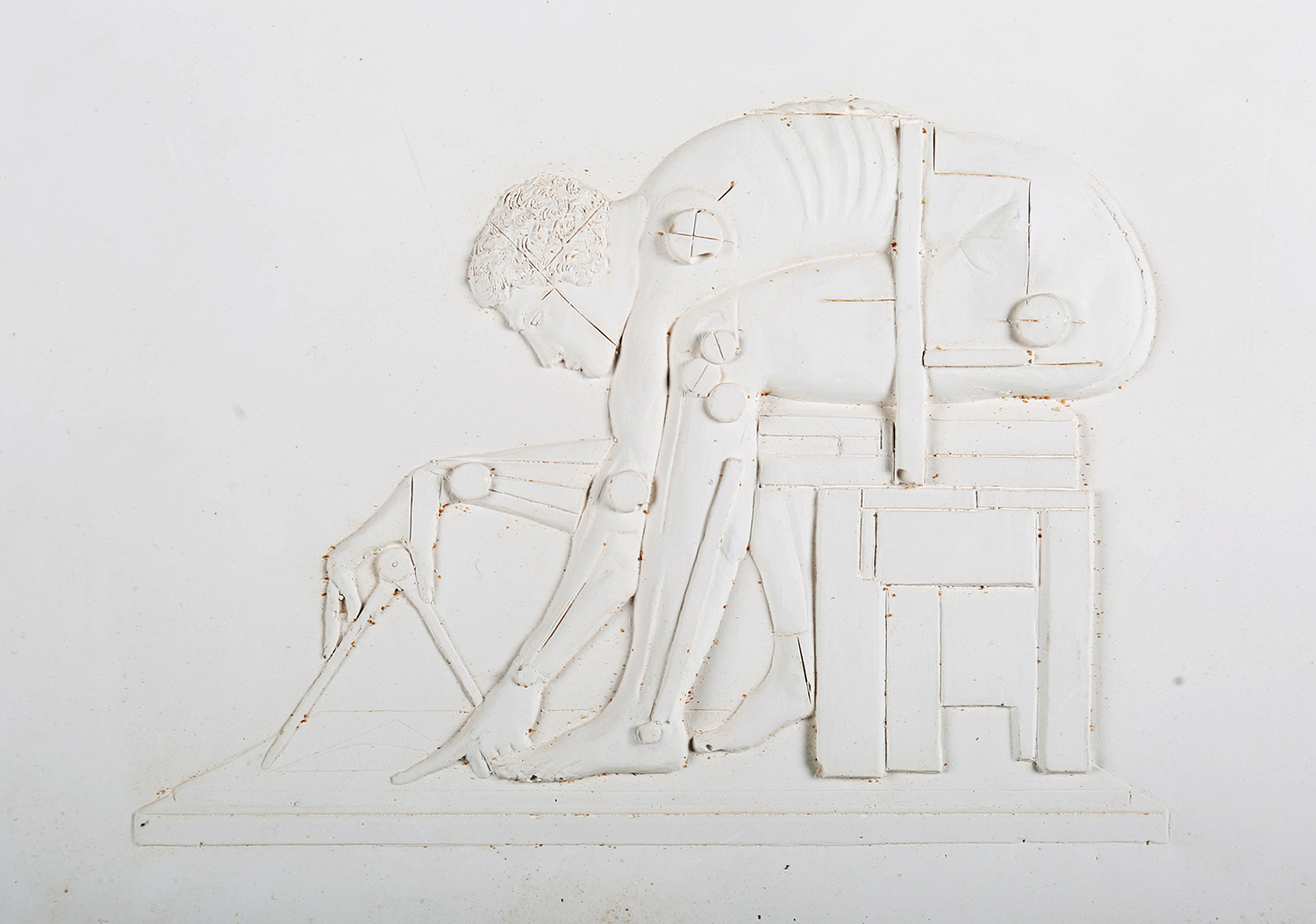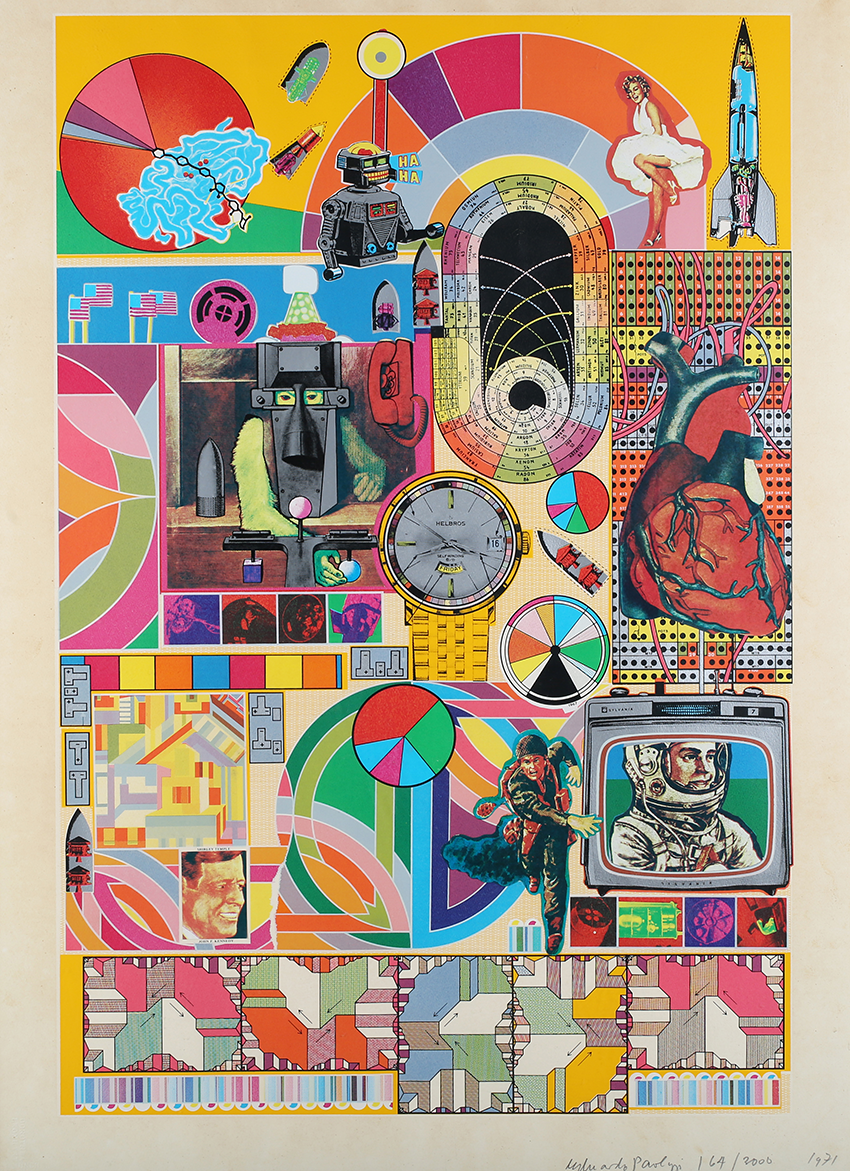
The British artist Eduardo Paolozzi claimed to have embraced “…the iconography of the New World. The American magazine represented a catalogue of an exotic society, bountiful and generous, where the event of selling tinned pears was transformed in multi-coloured dreams…” This fascination with American culture is clearly expressed in in his art. In the late 1940s and early 1950s a cold-war generation of artists in Britain began to turn towards New York for inspiration rather than Paris. Paolozzi had a foot firmly in both camps. He emerges as an artistic bridge between post-war Britain and the US.
One of Paolozzi’s most celebrated sculptures is ‘Newton after Blake’ made for the forecourt of the British Library. It was commissioned by the British Library’s architect the late Colin St John Wilson, who was also responsible for the Pallant House Gallery extension in Chichester. The plaster bas relief titled ‘The British Library, Newton after Blake’ sees the theme repeated. It sold at Toovey’s for £460. Eduardo Paolozzi was fascinated by the artist William Blake’s image of Sir Isaac Newton from 1795. In Blake’s depiction the scientist appears oblivious to all around him, consumed by the need to redact the universe to mathematical proportion. Paolozzi explained of his own sculpture that “…Newton sits on nature, using it as a base for his work. His back is bent in work, not submission, and his figure echoes the shape of rock and coral. He is part of nature.”

Alongside Paolozzi’s cultural icons and totems the resilience and fragility of the human person and the influence of humankind’s relationship with technology is expressed through the culture of science fiction, and robots also recur as a theme in his work. The complicated array of influences are often collaged into a single work as can be seen in the screenprint Bash which realised £340 at Toovey’s despite being from an unimaginably large edition of 2000. The geometric qualities of his art speaks of the machine in our age, and the influence of boogie woogie. A rich collage which, for him, described modernism.
Paolozzi’s prints and plaster reliefs give voice to the idea of relationship between collage and image making. The prints with their often vibrant colour allowed the artist to explore visual comparisons between music and drawing. They are also connected with Paolozzi’s sculptural reliefs.